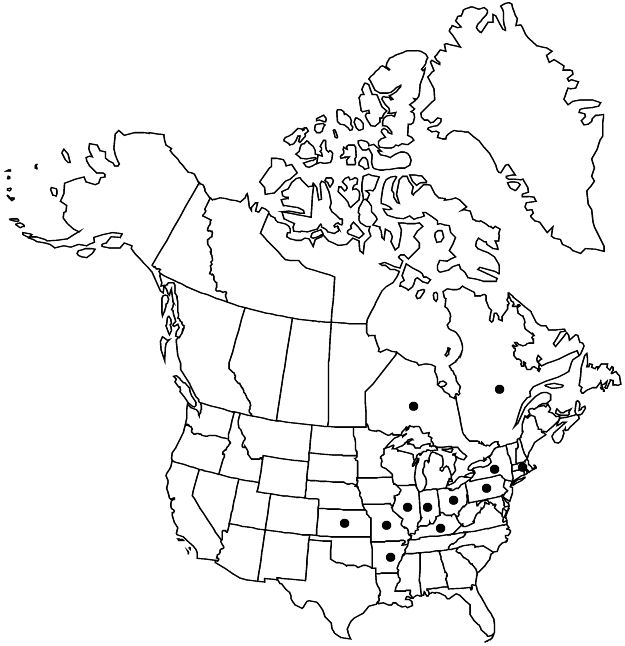Crataegus coccinioides
J. Elisha Mitchell Sci. Soc. 16: 74. 1900.
Shrubs or trees, 40–70 dm. Stems: twigs: new growth ± reddish at first, glabrous or pilose, 1-year old shiny, dark brown to sometimes tan, 2-years old deep gray, older paler; thorns numerous, usually ± recurved, 2-years old blackish, shiny, 3–6 cm. Leaves: petiole length 30–50% blade, glabrous or sparsely hairy, usually sparsely glandular, sometimes eglandular; blade usually ovate, sometimes very broadly ovate, to ovate-deltate, (4–)5–9(–11) cm, base broadly cuneate, ± truncate, or subcordate (broader leaves), lobes 3–5 per side, sinuses shallow, lobe apex acute, margins serrate or sharply serrate, veins 5–7 per side, apex acute, abaxial surface glabrous, veins glabrous or tomentose, adaxial glabrous or pubescent. Inflorescences 5–12-flowered; branches glabrous or densely pubescent; bracteoles hyaline to red-tinged, oblong to curved, membranous to semiherbaceous, margins glandular. Flowers 20–25 mm diam.; hypanthium glabrous or pubescent; sepals 6–8 mm; stamens 20, anthers white, rose, or red; styles (4 or)5. Pomes bright pink to crimson, suborbicular, 10–20(–25) mm diam., often ± pruinose; sepals spreading or ± reflexed, not on collar; pyrenes 5. 2n = 51.
Phenology: Flowering Apr–May; fruiting Sep–Oct.
Habitat: Brush, successional fields, pastures, woodland margins
Elevation: 50–300 m
Distribution

Ont., Que., Ark., Ill., Ind., Kans., Ky., Mass., Mo., N.Y., Ohio, Pa.
Discussion
Crataegus coccinioides occurs from the southwestern Midwest to New England and southern Quebec. Records from Vermont and Oklahoma are unconfirmed.
Crataegus coccinioides, in typical plants, has 20 rose-colored anthers and more or less glabrous parts. The opposite characteristics (white anthers, very hairy parts) are found in C. declivitatis. Another white-anthered form is C. conspecta. Somewhat similar to the latter is C. locuples, while C. dilatata is more of an intermediate type. Combinations of these varying characteristics can be found both in Missouri and the Niagara Peninsula of Ontario in various mixes. When in fruit, pruinosity and the pink-crimson color differentiate C. coccinioides from members of ser. Coccineae, which are scarlet or deeper red. Crataegus coccinioides also has somewhat more coriaceous leaf blades than ser. Coccineae, with the toothing more continuous, almost to the petiole, and much more conspicuous bracteoles.
Selected References
None.